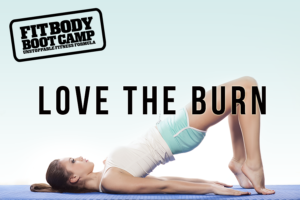Let’s talk about your back. It helps you with everything, it supports you when you need it, and it’s got your…well, back! So how do you take care of it?
Approximately 8 out of 10 people will experience some sort of back pain during life. Moving heavy furniture, picking up a grandchild, or being on your feet all day can cause back pain, but so can using the wrong technique during exercise. While exercise is good for your back and even recommended to relieve most back pain (check out our blog post about that), if the exercise is done the wrong way it can worsen pain or cause it in the first place. Therefore, it’s vital to use proper form while performing even the simplest of exercises.
You may not know it but the following common exercises can hurt your back if done incorrectly. Under most circumstances, exercise is good for back pain. However, see a doctor if your pain is worse at night or when lying down, lasts longer than six weeks, is accompanied by a fever or unexplained weight loss, or occurs after a fall. Talk with your trainer to learn proper technique for each exercise, and keep these in mind as well.
Planks
 A fabulous exercise to strengthen your core muscles and heal back pain, the plank must be done right for it to be effective. The danger to your back comes when you let your hips fall toward the floor or your upper back arch toward the ceiling. These two positions may hyperextend the spine or hyper-flex the upper back and cause injury. Always keep your hips in a straight line with your ankles and shoulders to avoid back pain from your planks.
A fabulous exercise to strengthen your core muscles and heal back pain, the plank must be done right for it to be effective. The danger to your back comes when you let your hips fall toward the floor or your upper back arch toward the ceiling. These two positions may hyperextend the spine or hyper-flex the upper back and cause injury. Always keep your hips in a straight line with your ankles and shoulders to avoid back pain from your planks.
Supermans
The superman or superwoman exercise (whatever you want to call it) is a great exercise to strengthen the back muscles, but it can also put your spine at risk for hyperextension, as overuse of back-extensor muscles can lead to back problems. Rather than spending time doing supermans, do a few more planks to strengthen your back and core.
Lunges
Lunges are one of the most effective leg exercises, but it’s important to maintain proper posture. While doing lunges of any kind (forward, lateral, or reverse), keep your back straight rather than rounded or arched. Also, make sure your knees are kept in line with your hips and feet instead of angled inward to avoid strain on your lower back.
Push-Ups
Push-ups are, in a sense, planks in motion, so the rules that apply to planks apply to push-ups as well. The upper-body movement of push-ups makes the rules a bit more challenging. As you’re doing a push-up, keep your back straight. Don’t let it sag or arch. Before you lower and raise your body, pause for a second to make sure your body is in alignment. Doing so will not only protect your back but guarantee you get the most benefit from your exercise.
Squats and Deadlifts
While squats and deadlifts are two different exercises, they both pose a similar danger to your back if not performed using proper form. The more weight added to these exercises, the greater the risk for injury. As you squat or deadlift, it’s important to keep your back straight (not rounded) and shoulders back (not hunched over). As you lift, drive your hips forward rather than pushing out your chest. A  swooping motion may excessively arch the lower back, so be careful!
swooping motion may excessively arch the lower back, so be careful!
The Glute Bridge
Recommended as an exercise to relieve low back pain, the glute bridge can make the pain worse if performed incorrectly. As you lie on your back with your knees bent and feet on the floor, make sure you lift your hips using your core and glute muscles rather than your leg and back muscles. When you reach the top of your lift, keep your lower back from over-arching.
